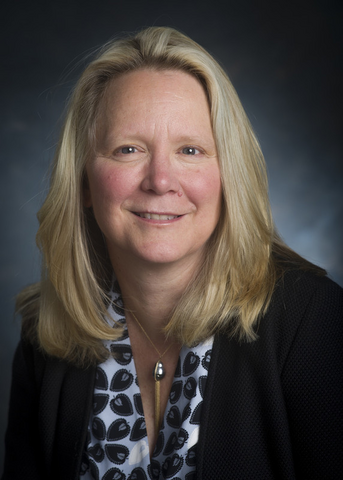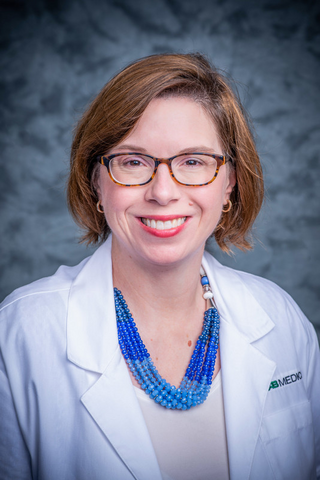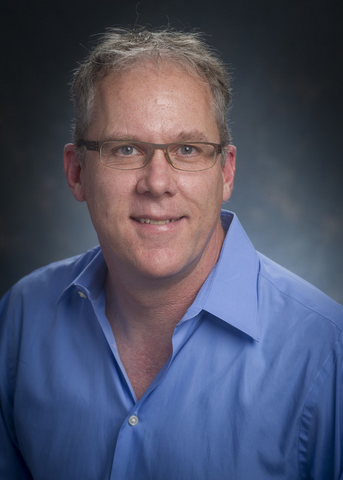 Fran Lund, Ph.D.Memory immune cells reside in many tissues, poised to react to a second infection or continuing antigen. Yet little is known about these tissue-resident memory cells — how they get there, how they evolve and how they compete in tissues.
Fran Lund, Ph.D.Memory immune cells reside in many tissues, poised to react to a second infection or continuing antigen. Yet little is known about these tissue-resident memory cells — how they get there, how they evolve and how they compete in tissues.
A five-year, $18.5 million grant will allow University of Alabama at Birmingham researchers to investigate T and B tissue-resident memory cells, known as TRM and BRM cells, in three unique sites — transplanted lungs, transplanted kidneys and the transplanted uteruses of UAB patients. The transplants permit researchers to study memory cells in tissue over time, learning how the cells ended up there, whether they will stay or go, how they might differentiate and what role their progeny will play.
Donor tissue transplants from another person are new, non-self environments that require immunosuppressant therapy for the recipient. Periodic samples from the transplants will allow UAB project directors Fran Lund, Ph.D., Paige Porrett, M.D., Ph.D., and Troy Randall, Ph.D., to address the central hypothesis of their grant — “that the human immune memory compartment is constantly evolving in response to tissue-specific and antigen-specific signals that influence the durability and programming of those cells,” as they write in their research strategy.
Often studies of immune responses in humans are like taking a snapshot photo — interesting and memorable, but lacking enough context to fully understand what is happening, Lund says. Similarly, Randall says, many longitudinal immunology studies have looked at immune cells by taking serial draws of peripheral blood. Yet it is in the transplant tissue, not the blood, where immune rejection occurs.
“To move beyond the snapshot approach for studying immune responses, we have developed methods to comprehensively track clonally related lineages of antigen-specific B and T cells over time, both in circulation and in tissues,” Lund said. “We will use these methods to address fundamental questions about the generation, evolution and durability of antigen-specific B and T cell responses in transplant recipients.”
This research grant — awarded to UAB as part of the National Institutes of Health program titled Cooperative Centers on Human Immunology — will focus on better understanding the fundamental processes that regulate BRM and TRM cells. Indirect benefits that might evolve from the work include how to block immune rejection of transplanted lungs and kidneys; understanding the phenomenon of “immune tolerance” in the uterus, where the immune response is dampened to protect the non-self fetus during pregnancy; or learning how to lessen the damage caused by auto-immune diseases such as lupus, psoriasis, inflammatory bowel disease or Type 1 diabetes.
Data from preliminary work to support UAB’s grant application to the National Institutes of Health already has potential to result in identification of monoclonal antibodies that could block antibody-mediated rejection of a transplant, Lund says.
 Paige Porrett, M.D., Ph.D. Immune rejection is a problem: Lung transplant patients have about a 50 percent life expectancy at five years. While survival of the kidney graft is about 80 percent at five years, it drops to about 50 percent at 10 years. “Chronic rejection is often due to antibody-mediated damage to the transplanted organ,” Lund said. “Antibody-mediated rejection takes a few years to develop, but once it develops, you can’t stop it.”
Paige Porrett, M.D., Ph.D. Immune rejection is a problem: Lung transplant patients have about a 50 percent life expectancy at five years. While survival of the kidney graft is about 80 percent at five years, it drops to about 50 percent at 10 years. “Chronic rejection is often due to antibody-mediated damage to the transplanted organ,” Lund said. “Antibody-mediated rejection takes a few years to develop, but once it develops, you can’t stop it.”
Three grant-funded scientific service cores will support the three research projects that focus on transplanted kidneys (Lund), uteruses (Porrett) and lungs (Randall). “The cores are critical,” Lund said. “We could not do this project without them.”
Core B is led by R. Glenn King, Ph.D., Department of Microbiology. It will provide tools to follow clonal lineages of BRM and TRM cells over time and across tissues. Core C is led by Todd J. Green, Ph.D., Department of Microbiology. Core C will provide the immunoreagents required to identify antigen-specific B cell populations and to assess the evolution of these cells and antibodies at a molecular and structural level. Core D is the bioinformatics team led by Alex Rosenberg, Ph.D., Department of Biomedical Informatics and Data Science. The Rosenberg team will integrate with all the projects and cores by providing analytical expertise to identify and track memory clonal lineages and to interrogate the dynamic transcriptional, epigenetic and phenotypic changes that occur in single cells in the different memory compartments over time. A fourth core, Core A, is administration.
Also crucial to the grant is collaboration with UAB transplant surgeons, patient-focused transplant clinicians, and the Histocompatibility and Immunogenetics Laboratory that matches donor organs with human recipients.
Transplanted organs are routinely sampled in the clinic to monitor immunosuppression, and this will provide a source of tissue samples over time for the research teams. Lung biopsies via bronchoscopy, for example, provide tissue and lavage fluid. “A patient’s quality of life depends on coming in every two months for bronchoscopy,” Randall said. The lung biopsies usually target areas of inflammation. A uterus transplant is typically sampled using a biopsy catheter once a month for the first half-year, before in vitro fertilization begins, Porrett says.
Also, researchers can study a lung or kidney explant after it fails and is taken out. The uterus is a temporary transplant to help a woman without a uterus bear a child, and the transplanted uterus is taken out via hysterectomy at the time of delivery. “We have done two transplant hysterectomies at UAB, and we have started analysis of them,” Porrett said.
Tissue resident memory cells do not have a long history. TRM cells were discovered about 15 years ago. They exhibit potent and rapid effector activity as first responders to a second infection or antigenic challenge. In 2019, UAB’s Randall was the first to describe BRM cells in the lungs after a flu infection. These cells can rapidly differentiate into local antibody-secreting cells upon a second infection. Both BRM and TRM cells have altered gene expression profiles that let them home to a tissue and reside there.
 Troy Randall, Ph.D.The $18.5 million U19 grant from the National Institute of Allergy and Infectious Diseases began May 1. It melds an interactive group of great diversity — surgical, clinical, tissue-matching lab, wet lab, structural biology and bioinformatics. “Being able to bring all these different people together speaks well for UAB,” Lund said.
Troy Randall, Ph.D.The $18.5 million U19 grant from the National Institute of Allergy and Infectious Diseases began May 1. It melds an interactive group of great diversity — surgical, clinical, tissue-matching lab, wet lab, structural biology and bioinformatics. “Being able to bring all these different people together speaks well for UAB,” Lund said.
Together, this diverse group will work on the central theme of the five-year study — that memory T and B cells and long-lived antibody secreting cells are critically important for durable immunity to pathogens. However, these long-lived cells, when directed against the “wrong” targets like self antigens or transplantation non-self antigens, can cause significant tissue damage. If clinicians want to “tune” memory responses to aid immune protection or prevent immune-mediated damage, there is a need to understand the factors controlling the development, evolution and durability of the memory compartment.
“We need to have a better idea of how and when to intervene,” Randall said.
At UAB, Porrett is the Vera Hauptfeld-Dolejsek Endowed Professor of Transplant Immunology and director for Clinical and Translational Research for the Comprehensive Transplant Institute, or CTI. Porrett is also the inaugural director of Vascularized Composite Allotransplantation for the CTI and was recruited to the UAB Department of Surgery three years ago to build the fourth uterus transplant program in the United States.
Lund is a former chair of the UAB Department of Microbiology and current director of the Heersink School of Medicine Immunology Institute. She holds the Endowed Chair in Immunology in the Immunology Institute. Randall holds The Meyer Foundation William J. Koopman, M.D., Endowed Chair in Immunology and Rheumatology, in the UAB Department of Medicine.